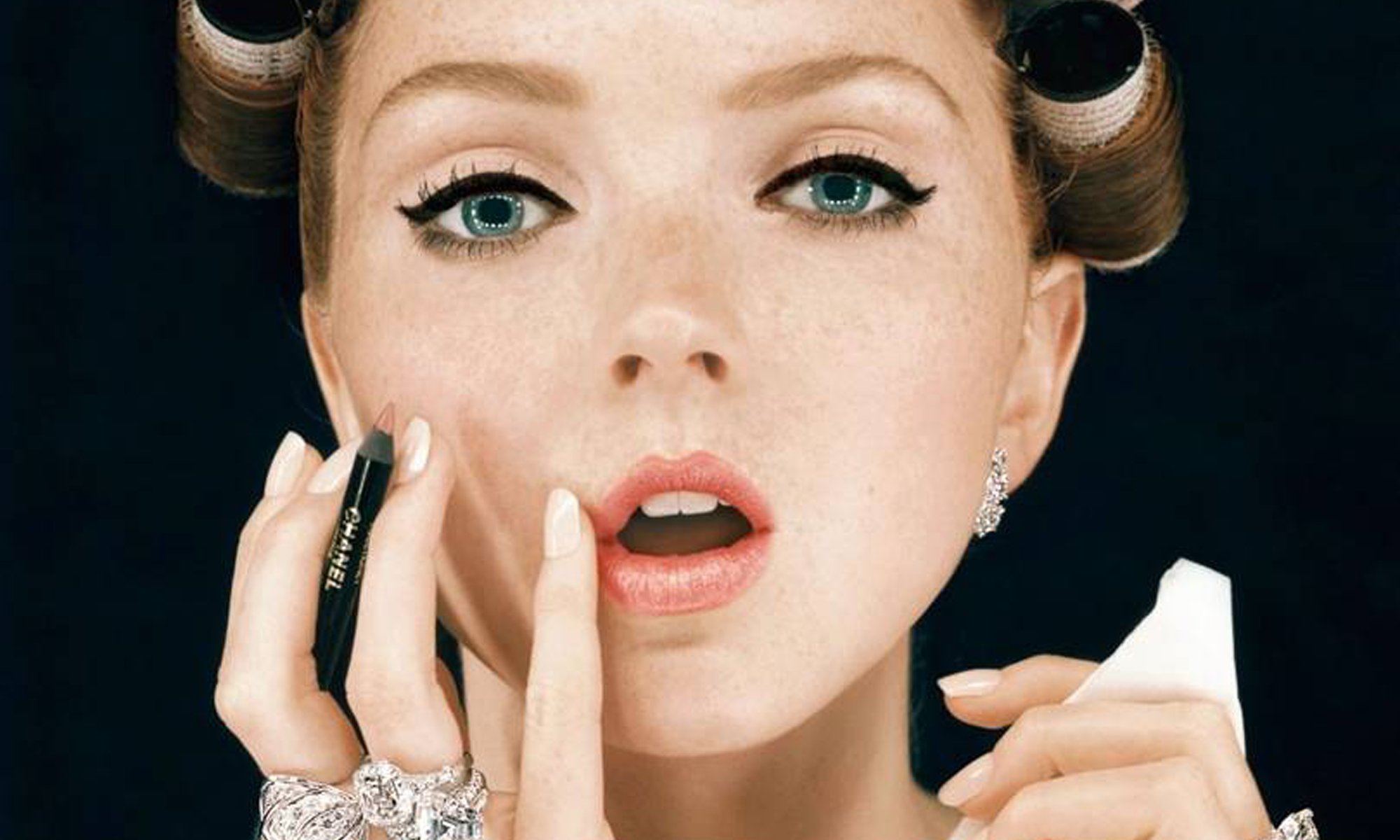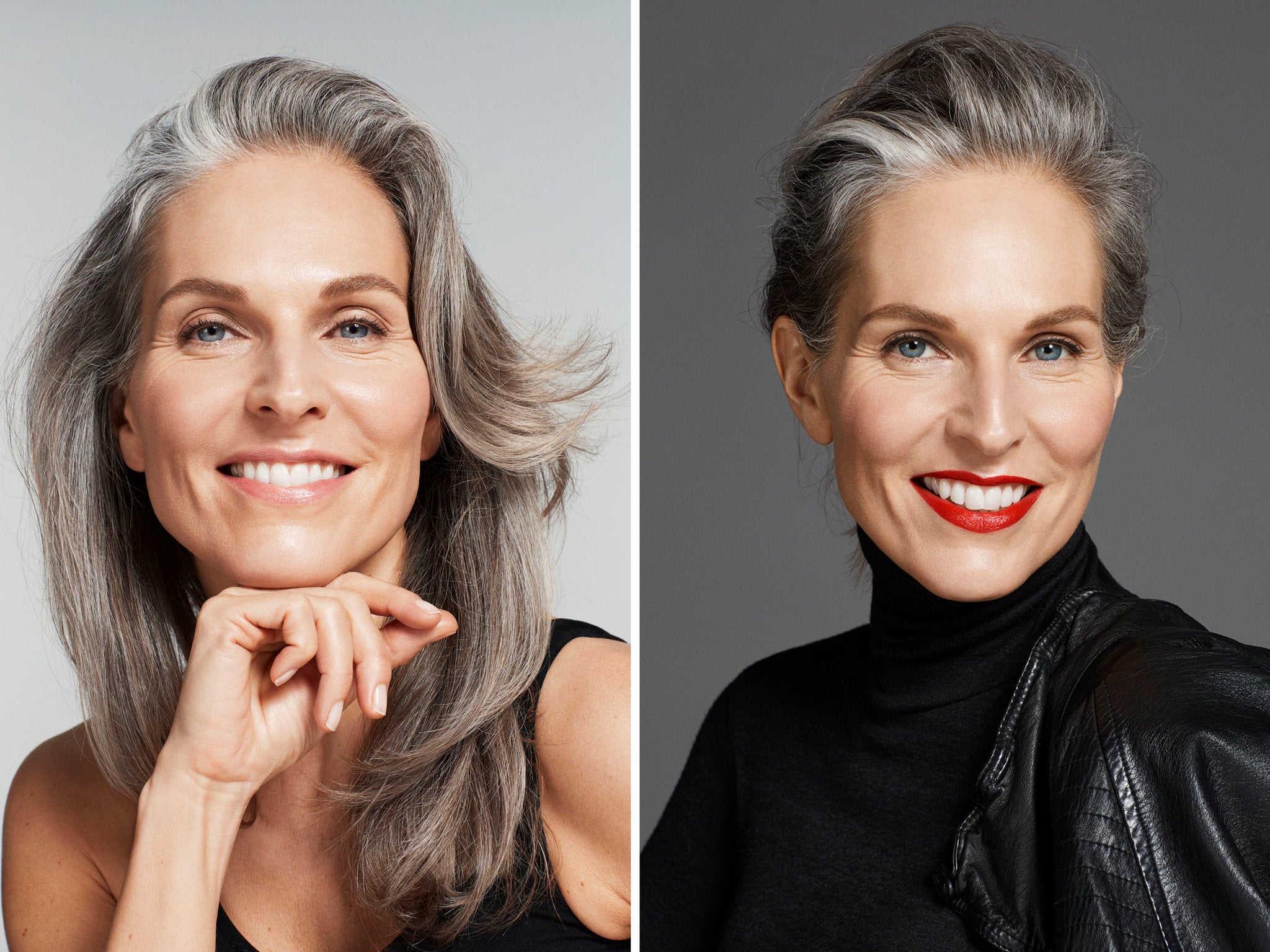
All Your Biggest Skin-Care Concerns — Solved
We all have a particular skincare issue we'd like to fix. We're not talking about changing the way we look, but the way our skin behaves. An oily T-zone that looks more like a mirror than a forehead come lunchtime? We've been there. Chin scars left from a nasty bout of hormonal acne? We understand.
Skin can be a very temperamental thing, subject to change whenever our environment, hormones, lifestyle, or the products we use do. It can often feel like a constant battle — like when a dry patch clears up only for blackheads to appear — which is why we went to the pros to put our skin concerns under the spotlight.
Eight Refinery29 staffers, all with different skin tones and types, asked eight experts to help solve their issues. Read on to find out what they advised.
Hyper-Pigmentation
Problem: Hyper-Pigmentation
"I have hyper-pigmentation on either side of my face as a result of acne. I've had it for about 10 years, since breaking out in high school. I've tried so many things, from natural products to treatments like microdermabrasion and glycolic peels to light therapy — but nothing seems to help." - Samantha Yu, Brand Director
Expert: Dr. Justine Hextall, dermatologist at The Harley Medical Group
"First assess the depth of the pigmentation to find the appropriate treatments. It may be that, although acne inflammation triggered the pigmentation, other factors are exacerbating the problem. Topical treatments such as Kligman's cream (with hydroquinone, hydrocortisone, and retinoid) may help to reduce the pigmentation and should be used before any active treatments, such as a peel. (The latter in itself can cause post-inflammatory pigmentation, so I always advise caution with any peels in the context of hyper-pigmentation.) After a course of Kligman's cream, microneedling may help. This can target pigmentation and any possible acne scarring. Finally, ongoing treatments to reduce recurrence would include a high factor sunscreen, preferably with a physical block such as zinc oxide, and I advise topical vitamin C. It blocks the production of melanin, and has antioxidant properties that protect against free radical damage from UV and pollution that can cause unwanted skin pigmentation."
Hormonal Cystic Acne
Problem: Cystic Acne
"I've had hormonal cystic acne for least a year and a half now. I've tried everything and am currently using Differin and Acnecide which has sorted out the acne for the most part, but big pores, redness, hyperpigmentation, and inflammation are still a problem. I have pared back my skin-care routine and use various masks and peels to soothe and calm. My skin is extra-sensitive to sodium laurel sulphate, which can make me break out in painful whiteheads, and harsh acids like salicylic acid dry me out and don't work. Help!" -Sadhbh O'Sullivan, Social Media Assistant
Expert: Dr. Sajjad Rajpar, dermatologist at Belgravia Dermatology
"The good news is that it sounds as though your active is under control. You have redness and sensitive skin because both the treatments you are using cause irritation as a side effect. It may be time to cut down Acnecide to alternate nights or even to twice a week. It may also be helpful to introduce a light non-comedogenic moisturizer that contains vitamin B3 to help restore the skin barrier. These measures will improve redness and sensitivity.
"There are other reasons you may have redness too. When acne spots resolve they can leave a localized area of redness which can last for several months. This is because inflammation in an acne spot causes new blood vessels to form in the skin. The redness can be quite deep in color and, fortunately, usually lessens with time. Laser treatments or IPL can help reduce the level of redness very effectively."
Milia
Problem: Milia
"I've had milia around and under my eyes for around 10 years. I once had them removed during a facial but they came back. In the past I've used exfoliating scrubs, but my skin is too sensitive. Now I use an overnight exfoliator and sometimes they come away on their own while I wash my face – but nothing I've tried has really worked." -Rose Lander, International Coordinator
Expert: Dr. Frances Prenna Jones, cosmetic doctor
"It is important to differentiate milia from fatty deposits under the skin (they can often look the same), as the treatment of these is often different. Milia are essentially trapped calcified secretions under the skin, which are often caused by using too greasy a moisturizer and not using glycolic acid products, which slough away the top dead layer of skin cells. Paradoxically, if you physically scrub the area though it will make them worse! So prevention is better than cure: Use a product that contains glycol. They need to be removed by an experienced professional otherwise, as they can scar if you try and remove them yourself."
Oily T-zone
Problem: Oily T-zone
"I suffer from acne, which is mostly hormonal, on my chin, and I have a very oily T-zone. I always take my makeup off before bed, double cleanse when I've worn makeup, and try to avoid anything with SLS, mineral oil, shea butter and typically stick to fragrance-free cleansers. What else can I do?" -Louise Whitbread, Editorial Intern.
Expert: Dr. Sarah Tonks, cosmetic physician, facial surgeon, and dermatologist
"As someone with oily skin too, I know how you feel. I have my patients use Skinceuticals Simply Clean, which is a cleanser containing exfoliating AHAs. If you wear makeup it’s also important to tone, so I tend to go with Skinceuticals Equalizing Toner or Obagi C-Rx Exfoliating Day Lotion, both of which contain witch hazel. Then for daytime I'll use SkinCeuticals C E Ferulic which is great for oily skin, then Alumier AHA Renewal Serum again because I like to layer these AHAs to exfoliate the skin. Alumier Matticlear Solution is great to soak up any excess oils. I then like the Oxygenetix Oxygenating Foundation Acne Control SPF25 because it doesn't clog my pores. At nighttime I go with the same cleanser and toner followed by a retinol, and then every other night I'll go with the Skinceuticals Resveratrol B E."
Sebaceous Filaments
Problem: Sebaceous Filaments
"I rarely get spots, but in the last 18 months or so I noticed these tiny, hard grey bumps filled with a drop-shaped beads. In the last month they have increased. I get them on my chin and between my brows. I haven't tried any products on them, but I'm obsessed with squeezing them out! How can I stop them or slow down their appearance?" - Natasha Slee, Social Media Manager
Expert: Dr. Anita Sturnham, dermatologist and founder of Nuriss Clinics
"Sebaceous filaments are often under-diagnosed and mistaken for blackheads or whiteheads — but their characteristics are very different. A sebaceous filament is a tiny collection of sebum (oil) and old dead skin cells, which accumulate around a hair follicle. To target the filaments, adding in a combination alpha and beta hydroxy acid cleanser will help, thanks to its double-action cleansing mechanism. The lactic and glycolic acid exfoliate and remove dead skin cells, while the salicylic acid will seep into your pores, reduce bacteria, oil, and inflammation. Start off by using this at night, which in my opinion should always be the more intensive cleanse in your regimen.
"Dehydration can trigger faster sebum production, increasing the rate of pore clogging. The key to preventing this is to ensure that you have adequate skin hydrators in your skin-care routine, and to avoid pore-clogging facial oils and comedogenic moisturizers. Morning and night serums with a high molecular weight hylauronic acid will be your skin savior. Adding in a retinoid (vitamin A) serum or night cream is also great, because the nutrient will reduce sebum, bacteria, inflammation, and improve cell turnover. There's no need to blitz your skin with high doses of retinoids to address this skin concern, though — just 0.5-1% of a second or third generation retinoid works wonders, and I find products with additional hyaluronic acid in the formula help to counteract any dryness or irritation that one may see typically after using these types of products."
Spots
Problem: Spots
"I get spots after having my eyebrows threaded. Is there any way to avoid this?" -Sarah Raphael, Editor-at-Large
Expert: Dr. Stefanie Williams, dermatologist and author of Look Great, Not Done! The Art and Science of Ageing Well – How Aesthetic Treatments Can Work for You
"‘Breakouts’ after eyebrow threading are usually one of two things – irritation or folliculitis. If you develop some minor redness and a few tiny little ‘bumps’, this may be a simple irritant reaction. For mild irritant reactions, a soothing aloe vera gel might be all you need (wash your hands before applying it!). I would always recommend combining this with application of a non-irritant antiseptic such as Clinisept+ Solution to avoid bacterial contamination. If that doesn’t help, a couple of days of a mild steroid cream, best in combination with an antibacterial ingredient — like prescription Fucidin H cream from your doctor — is usually very effective.
"However, proper breakouts with acne-like spots or pimples can be bacterial folliculitis, which means bacteria have entered the hair follicle during or shortly after the threading and are causing the ‘breakouts.' To help prevent this, hygiene prior to and around the threading procedure is very important, so make sure you are visiting a reputable salon, your therapist doesn’t reuse thread, and works as cleanly as possible. Also, avoid touching the area with your hands for a few hours after the threading. It’s also a good idea to dab a gentle antiseptic solution (like Clinisept+) onto the skin before and after the treatment. If despite all precautions you still develop folliculitis, you might need topical antibacterial treatment from your doctor, like prescription Dalacin T lotion or Fusidic acid cream."
Red Marks/Scarring
Problem: Red Marks/Scarring
"I've been suffering from hormonal acne for the past year, and although it's finally clearing up (thanks, Differin!) I'm left with red marks and scars on my skin where the spots once were. What's the most effective way to get rid of them? I regularly use acids in my skincare routine but I wonder if I should incorporate something else as well?" -Chemmie Squier, Branded Content Manager
Expert: Andrea Pfeffer, aesthetician and founder of Pfeffer Sal
"When it comes to reducing acne scarring, there are a few avenues that you can take, but it’s important to ensure that the active acne is totally cleared – so be patient. This will ensure you don’t accidentally aggravate the breakouts whilst trying to target existing scarring. Skin peels will reduce the pigmentation dramatically by deeply exfoliating and resurfacing the skin. Our peels [at Pfeffer Sal] are a series of controlled, lighter peels to achieve effective and safe results. If there are any textural changes, I recommend a course of medical needling. This needling works on the principal of controlled trauma to the skin in order for it to start releasing growth factors, and puts the wonderful fibroblasts to work, leading to the right type of collagen being produced, which will then be remodeled, reducing the appearance of pitted scar.
"At home, incorporating exfoliating acids into your regimen is a great step toward reducing scarring. Another must is to wear SPF every single day. Sun protection will prevent the scarring from becoming further pigmented or sensitised. No excuses! Apply, apply, apply – even on the cloudiest of days!"
Combination Skin
Problem: Combination Skin
"I really neglect my skin. I use micellar water and moisturizer in the evening and repeat that (lengthy) process again when I wake up. I am often quite oily yet dry on my nose, and have random patches of dry skin on my cheeks. Also, I have quite big pores and small pimples and would love to hear what I can do to exfoliate in a delicate way without using a harsh scrub." -Meg O'Donnell, Photo Assistant
Expert: Abigail James, celebrity facialist
“For a combination skin, just using a micellar water and moisturizer is not going to be enough, and may well be contributing to small pimples on the face. It may also cause the skin to sway from oily to dry. Using a micellar for a quick remove of makeup is fine but I would suggest also using a gentle wash to properly cleanse the skin morning and night. Starting the day with a gentle cleanse allows your moisturizer and makeup to sit on a fresh, clean base. This should also help keep pores clean even if they are slightly large. Nivea Daily Essentials Refreshing Face Wash Gel or Cosmedix Benefit Clean Gentle Cleanser are both good to begin with.
Exfoliating with something gentle two to three times a week will also help. You could use a Clarisonic, or an AHA face mask, which would gently remove dead skin cells while adding some hydration to dry skin. I would recommend a vitamin C mask. To further reduce large pores, try a derma roller in the evening once a week as an additional step. That said, I would make the other changes first, see how skin responds over a two-month period, and then look to progress."
Source:

